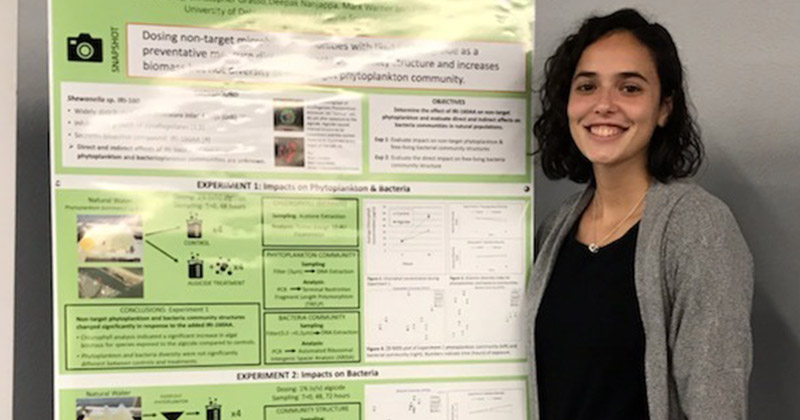
Category: Travel Award Spotlights

Emily Healey attends US Harmful Algal Bloom Symposium
November 02, 2019 Written by Emily Healey
Orange Beach, Alabama, United States
PROGRAM: Marine Studies
I had the privilege of attending the 10th US Harmful Algal Bloom (HAB) Symposium in Orange Beach, Alabama with the support of the UD Professional Development Fund. Nearly 400 people came out to listen, present and network with their fellow HAB researchers. It was a celebration, as well as learning experience, for the researchers studying marine, freshwater and estuarine algae species and toxins.
I work with Heterosigma akashiwo, a raphidophyte, that causes red tide in marine systems. Before attending the conference, I thought the focus would be on other marine species of harmful algae like the one I was studying. Instead, nearly half of the presentations were on freshwater species. There were also presentations on freshwater species that traverse the estuarine ecosystem. Numerous research projects focused on the ability to monitor and control harmful algae, as well as communicating science to the public. I quickly learned that HABs are a diverse area of study. I dramatically expanded my knowledge of my field by attending the symposium.
Every day I was able to learn directly from the experts and innovators in my field. Instead of reading the work in published articles, I was getting a firsthand account from the people who did the work. The scientists invited to the Plenary Talks were exceptional examples of this. All three scientists were women that are early in their careers and innovators in the field. I am proud to have been part of that audience that listened to them discuss their work on algal microbiomes, freshwater-marine continuums, and the coupling of social and environmental impacts of HABs.
I was also able to participate in poster sessions attended by my peers and mentors. Interacting with other professionals in the field was incredibly rewarding. Conversations spurred new ideas and suggestions that made me excited to get back to work. I am grateful to be part of an innovative and dedicated community of researchers. I look forward to contributing to this community in the future.
